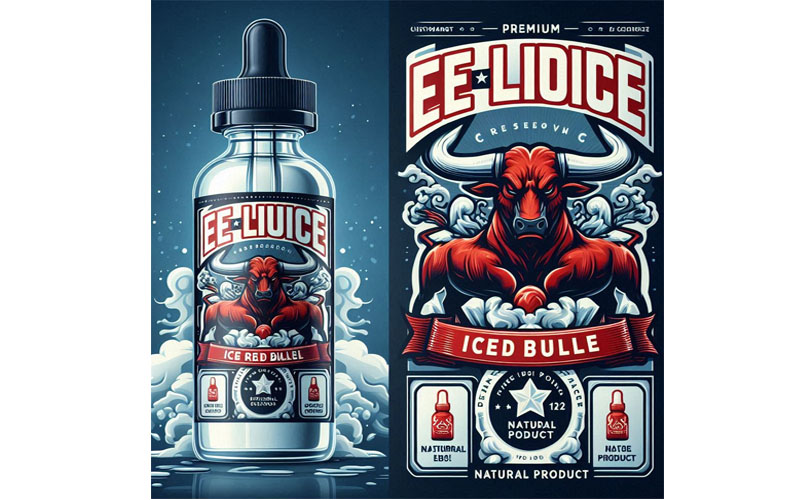Will High-Power Vapes Disappear?
Many vape users today might have forgotten one important fact: the vape industry was once dominated by high-power vapes. Back in the day, whether in offline vape stores or online vape shops, the mainstream products sold were high-power vapes. However, with the arrival of the "vape pen era" in 2018, high-power vapes gradually became a niche product. Today, many people may even think that high-power vapes have disappeared. But will high-power vapes really vanish?

The emergence of high-power vapes can be traced back to the period when the vape market began to mature. Early vape devices had relatively low power, offering only basic vapor production and failing to meet the needs of more experienced smokers who craved a "stronger hit." With advances in technology, devices capable of adjusting power and delivering high wattage were developed. These high-power vapes typically featured larger batteries, more powerful atomizers, and sophisticated temperature control systems. Users could adjust the output power according to their preferences, allowing for richer vapor production and a more intense throat hit.
Unlike traditional cigarettes, vaping offers a more personalized experience. High-power vapes not only simulate the smoking experience but also provide a variety of flavors and a denser vapor output, making them the preferred choice for many veteran users, especially those seeking a stronger experience.
The safety of vaping has always been a topic of controversy, and high-power devices, due to their use of high temperatures and high-concentration e-liquids, have sparked more discussions about health risks. High-power devices produce more vapor, often leading users to inhale more nicotine or other compounds, which, in the long term, may increase risks to the respiratory and cardiovascular systems. Additionally, the use of high temperatures might generate more harmful substances, such as formaldehyde and acetaldehyde, which are significant contributors to health concerns.
Regulations on vaping, especially high-power vapes, are being strengthened worldwide. In China, for example, the "Regulations on the Administration of E-Cigarettes" implemented in 2022 clearly set a limit on the nicotine concentration in e-liquids and imposed restrictions on the power output of vape devices. Countries in Europe and the U.S. have also introduced strict regulatory measures, such as the FDA's increasing market entry requirements for vape products. This suggests that high-power vapes may face stricter regulations in the future, potentially leading to their gradual exit from the market.
As more users shift from high-power devices to smaller, portable, and low-power devices, market demand is changing. Disposable vapes and vape pens, favored for their convenience and lower health risks, are rapidly capturing the market. These devices are popular among younger users, who prioritize ease of use, style, and a variety of flavors over dense vapor and a strong throat hit. Thus, while high-power vapes still attract a small group of seasoned vapers, their share of the overall market is shrinking.
In the future, manufacturers may focus on developing safer high-power devices as technology advances. For example, improving atomizer materials and optimizing temperature control technologies could reduce the production of harmful substances during use. Additionally, more manufacturers may offer e-liquids with controlled nicotine levels to minimize health risks. If high-power vapes can achieve breakthroughs in both technology and health, they might find a path to continued survival.
Although most consumers may lean toward smaller vape devices, high-power vapes still have a loyal following. These users are often experienced vape enthusiasts or those seeking a highly personalized experience. They are willing to spend more time and money experimenting with and fine-tuning their devices. For this niche market, high-power vapes hold an irreplaceable position. Therefore, even if their share in the mainstream market decreases, these devices may still maintain a foothold within niche communities.
The fate of high-power vapes will be directly influenced by regulatory policies. Governments may further restrict or even ban the sale of high-power devices. On the other hand, if high-power vapes can innovate to comply with new regulations, they may continue to exist in the market.
In conclusion, while high-power vapes are no longer mainstream in the current market, their disappearance is not inevitable. Their future largely depends on technological advancements, policy changes, and shifts in market demand. For advocates of high-power vapes, keeping an eye on the latest regulatory trends and technological developments will help determine whether these devices can still meet market needs. For the vape industry as a whole, finding a balance between health, safety, and user experience will be key to determining its future development.



 Prev:Which Vape Offers the Best Flavor?
Prev:Which Vape Offers the Best Flavor? Next:E-Liquid Bottles Also Require Attention
Next:E-Liquid Bottles Also Require Attention


